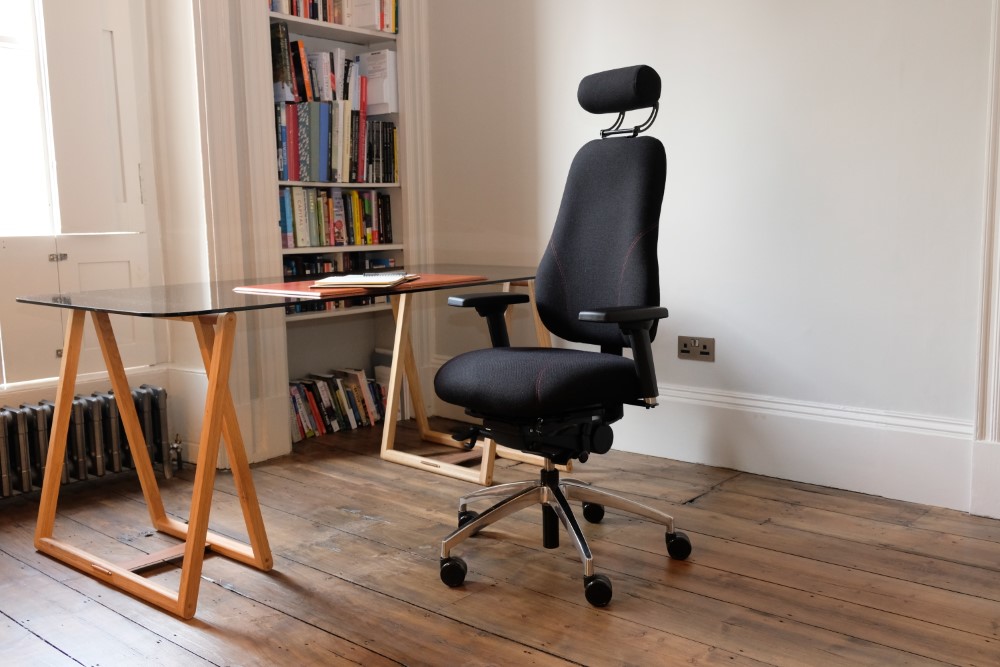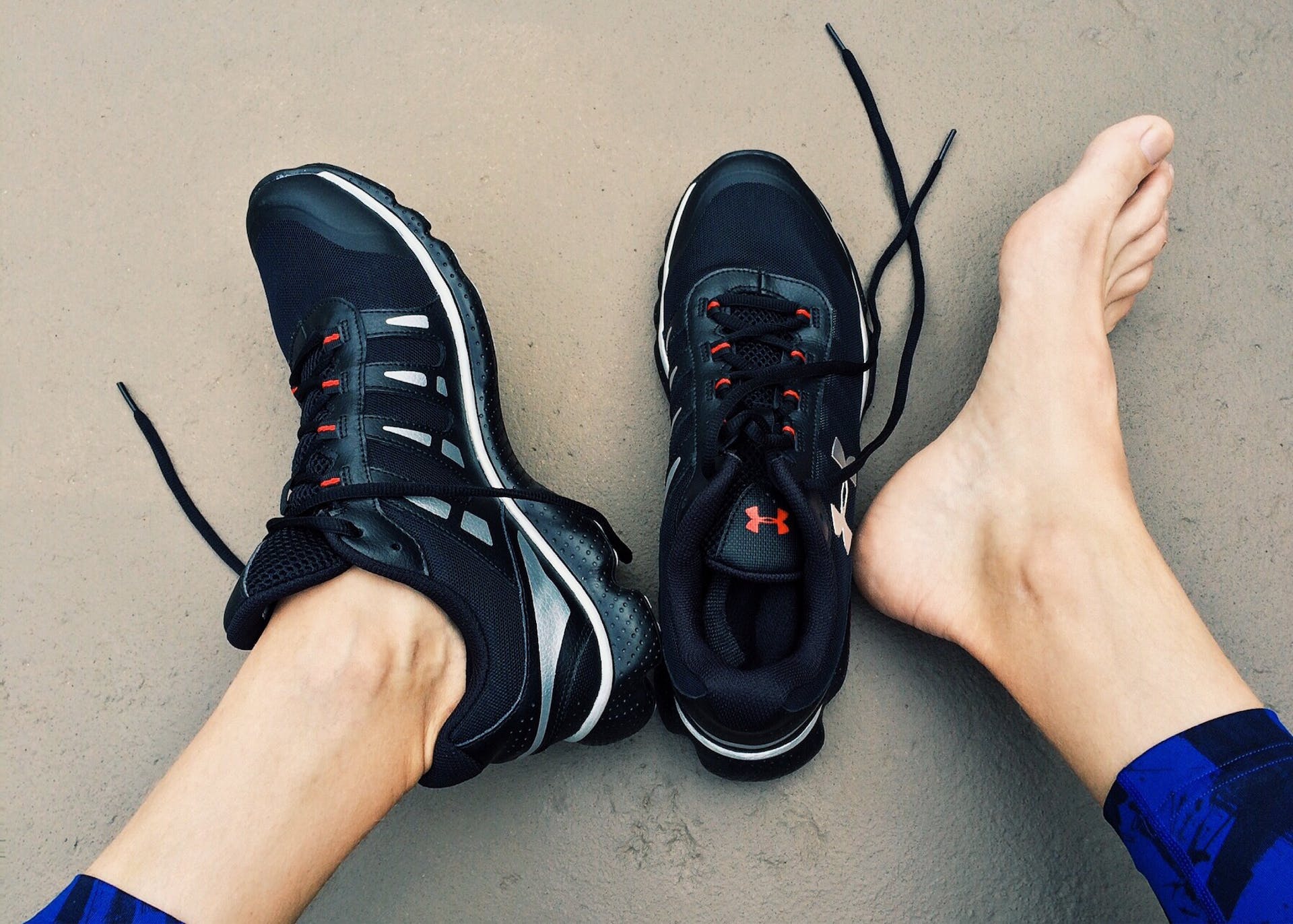Menopause marks a significant chapter in life, and while everyone’s experience is unique, there is a common thread in the discomfort and challenges the transition poses for many.
Most of us will be impacted by menopause at some point in our lives, whether we are approaching it, currently in the midst of it, or supporting a loved one through their journey. In this blog, our Chiropractor, Jessica, explores the potential benefits of chiropractic care as a holistic approach to helping those going through menopause.
Before we delve in too deep, it’s important to note that Chiropractors can be part of your overall support network to help manage specific menopausal symptoms and should work with other healthcare professionals, such as your GP, to provide comprehensive and well-rounded care.
Menopause usually occurs between 45 and 55 years of age, with the average age in the UK being 51. Approximately 13 million people in the UK are peri- or menopausal, equating to one-third of the UK’s female population!
Menopause is defined as having no period for one year or more. The years leading up to that point are known as peri-menopause, which is separated into early peri-menopause when the pattern of the menstrual cycle changes by becoming slightly longer and infrequent. Late peri-menopause is when the menstrual cycles become less frequent, with periods a few months apart, and the symptoms worsen. The transition usually lasts about seven years but sometimes takes 14 years.
Up to 80-90% of the menopausal population will have some symptoms, with 25% describing them as severe and debilitating. As oestrogen fluctuations cause menopausal symptoms, these symptoms can also affect trans men and non-binary people. The most common symptoms are;
- Hot flushes and night sweats,
- Disturbed sleep and insomnia,
- Low energy levels,
- Low mood,
- Anxiety,
- Low libido and low sexual drive,
- Impaired memory and concentration,
- A sensation of ‘brain fog’,
- Joint aches,
- Headaches,
- Palpitations
- Vaginal dryness and urinary symptoms.
The Role of Oestrogen
Oestrogen is an essential reproductive hormone in people of all sexes. It’s generally known as the ‘female’ sex hormone because of its role in developing the female reproductive system and regulating the menstrual cycle.
There are three types of Oestrogen; Oestrone (E1), Oestradiol (E2) and Oestriol (E3).
E1 is produced after menopause in the adipose (fat) tissue and adrenal glands. It isn’t as strong as the other types of oestrogen, but the body can store it and convert it to oestrogen when needed.
E2 is the most active form and is made in the ovaries during our reproductive years between puberty and menopause. It helps to maintain the menstrual cycle.
E3 is produced in the placenta during pregnancy to help support the uterus and embryo and maintain a healthy pregnancy.
Oestrogen has many roles within the body, such as;
- It helps to maintain skin moisture and elasticity by stimulating the production of hyaluronic acid. This substance retains water in the skin and promotes collagen and elastin production.
- Protects bone health
- Regulates cholesterol levels and promotes heart health
- Regulates mood
- Regulates the menstrual cycle
- It stimulates the development of female secondary sex characteristics during puberty, such as breast development, widening of the hips and enhancing pubic and underarm hair growth.
As we age, the number of egg cells naturally declines, stopping the follicles in the ovaries that produce E2 from growing; this is why levels naturally decline. During peri-menopause, the levels of E2 fluctuate, and once the periods have stopped completely, the levels of E2 remain consistently low. It is this drop in E2 that causes the symptoms of menopause.
Menopause & the Musculoskeletal System
Menopause can significantly impact musculoskeletal function, with increasing aches and pains reported. Bones, muscles and joints comprise the musculoskeletal system, along with cartilage, tendons, ligaments and connective tissue. This system gives your body its structure and support, and it’s where we Chiropractors may be able to help.
Bone Health
Our bones rely on oestrogen to maintain their density and strength because it inhibits bone breakdown and promotes the activity of osteoblasts, special bone-building cells. When oestrogen declines, bone density decreases, leading to reduced bone strength and an increased risk of breaking bones. Changes can happen more rapidly in the decade after menstrual periods stop, and then there will be a steady reduction into old age(2). This gradual bone density loss affects men too.
In more severe cases, this can lead to Osteoporosis, where the bones become weaker so they can break with minimal force applied. The lifetime risk of sustaining an osteoporotic fracture after 50 years is close to 50% for women and 20% for men (12).
If we suspect Osteoporosis, we will refer you back to your GP for a bone density/DEXA scan to establish how progressed it may be. We are still able to support those with a diagnosis of Osteoporosis as we can adapt our care as needed with a focus on gentle joint mobilisations and soft tissue release such as massage.
Muscular Health
There are receptors for oestrogen in all the skeletal muscles in the body. These are partially responsible for muscle regeneration and maintaining muscle health after stressors such as exercise (2). Therefore, when oestrogen declines, there can be a decrease in muscle mass, strength and power which is known as sarcopenia. Whilst muscle loss is expected as we age, with sarcopenia, this loss happens much faster (4).
Menopausal fatigue also plays a role in the loss of muscle mass, as motivation to exercise is negatively impacted by co-existing symptoms such as hot flushes and poor sleep quality.
Fortunately, the risk of developing sarcopenia in postmenopausal women may be managed through healthy lifestyle changes, including diet (i.e., adequate protein intake, sufficient vitamin D intake, omega 3) and regular physical activity alongside hormone therapy if applicable.
Connective Tissue Health
Within the musculoskeletal system, ligaments and tendons function as connective tissue. Ligaments attach bone to bone, and tendons attach bone to muscle. Oestrogen reduces the collagen content of connective tissues, increasing the stiffness in the ligaments and tendons(5).
A stiffer ligament is preferable in the case of ligaments, as it helps maintain joint stability and prevent injury. However, a more inflexible tendon is not necessarily beneficial. A stiff tendon will not stretch. Therefore, the muscle attached to that tendon will experience more loading, often resulting in muscle injury and irritations/inflammation of the tendon (tendinopathies)(5). In women, these commonly affect the gluteal, hamstring, Achilles and rotator cuff tendons resulting in aching in hips, bottom, heels and shoulders.
Joint health
Joint pain is a commonly reported symptom of menopause and can affect joints all over your body, which can also make longstanding injuries more painful. Osteoarthritis and rheumatoid arthritis can also develop or worsen in menopause; as oestrogen decreases, joints become more inflamed and painful. Osteoarthritis is a slow-progressing joint inflammation resulting from cartilage degeneration, and it is now recognised that this degeneration can occur due to oestrogen deficiency around menopause.
While joint pain and stiffness around menopause don’t always indicate osteoarthritis, it can be a symptom.
Back pain, particularly lower back pain, can become a problem for many as they go through menopause. One survey of 5,325 women found that postmenopausal women were twice as likely to report lower back pain as premenopausal women (10), with recommended treatments including physical exercise, massage, and manual therapy (11), which is where your chiropractor can help!
How we can help
Seeking Chiropractic care may not be the first thing you think of when going through menopause, but we are to offer support wherever you are in your journey. Whilst there is an assumption that Chiropractors are mainly focused on conditions of the spine and adjusting the joints, we can also help with goal setting, maintaining physical activity and supporting changes to your lifestyle.
Remember, it’s essential to consult with your healthcare provider for personalised advice and guidance tailored to your specific needs, but here are some lifestyle changes you can consider:
- Eat a healthy diet: Focus on a well-balanced diet that includes a variety of fruits, vegetables, whole grains, lean proteins, and healthy fats. Include foods rich in calcium and vitamin D to support bone health and manage weight.
- Stay hydrated: Drink plenty of water throughout the day to stay hydrated. Avoid or limit caffeine and alcohol, as they can trigger hot flashes and contribute to dehydration.
- Maintain your sleep hygiene: Establish a consistent sleep schedule and create a relaxing bedtime routine. Ensure your sleep environment is cool, quiet, and comfortable. Limit caffeine and alcohol consumption, especially close to bedtime, as they can disrupt sleep patterns. For more information on improving your sleep hygiene, read our previous blog on sleep science here.
- Engage in regular exercise: Regular physical activity can reduce the severity of symptoms like hot flashes, mood swings, and sleep disturbances. Aim for 10-20 minutes of resistance training 2-3 times a week and 3-4 cardiovascular activities such as walking, swimming or an exercise class. Incorporating strength/resistance training exercises can also help maintain muscle mass and support bone health.
- Manage stress and prioritise self-care: Practice stress-reduction techniques like deep breathing exercises, meditation, yoga, spending time in nature or any activity that brings you joy. Chronic stress can worsen menopausal symptoms, so finding effective stress management strategies is essential.
- Seek support: Talk to friends, family, or a support group about your experiences. Sharing your concerns and hearing others’ stories can provide valuable emotional support.
- Manage your musculoskeletal pain: While chiropractic care does not directly address hormonal changes, it can help manage some of the symptoms women may experience. Book an assessment with one of our Spinavita chiropractors to establish if we can help and create a bespoke treatment plan for you which may include soft tissue techniques, mobilisations of the joints and the use of our laser machine, which works wonderfully to reduce pain and swelling on arthritic joints, tendon, ligament and muscle injuries.
Remember, every woman’s experience with menopause is unique, so it’s important to find the support and resources that work best for you. Feel free to contact multiple sources to gather information and seek guidance that suits your specific needs. Recommended resources include Wellbeing of Women, Menopause Matters, or speak to the lovely Jo Weatherall at Menopause, Mayhem and Teens.
Chiropractic care offers women going through menopause a holistic and supportive approach to managing the physical and emotional changes during this phase by focusing on musculoskeletal health and overall wellbeing. If you are navigating menopause and seeking natural support, consider booking an appointment with us today as a complementary option to enhance your overall wellness.
To speak to one of our chiropractors, please call us on 01452 883232.
By Jessica Davy
References
- Hertility (no date) Oestrogen 101: Everything you need to know, Hertility Health. Available at: https://hertilityhealth.com/blog/oestrogen-101-everything-you-need-to-know-about-oestrogen/ (Accessed: 18 July 2023).
- Royal Osteoporosis Society (no date) 03.22 – What’s the menopause got to do with bone health? Available at: https://theros.org.uk/blog/2021-03-22-what-s-the-menopause-got-to-do-with-bone-health/ (Accessed: 18 July 2023).
- Geraci A, Calvani R, Ferri E, Marzetti E, Arosio B, Cesari M. Sarcopenia and Menopause: The Role of Estradiol. Front Endocrinol (Lausanne). 2021 May 19;12:682012. doi: 10.3389/fendo.2021.682012.
- Walston JD. Sarcopenia in older adults. Curr Opin Rheumatol. 2012 Nov;24(6):623-7. doi: 10.1097/BOR.0b013e328358d59b.
- Chidi-Ogbolu N, Baar K. Effect of Estrogen on Musculoskeletal Performance and Injury Risk. Front Physiol. 2019 Jan 15;9:1834. doi: 10.3389/fphys.2018.01834.
- Khadilkar, S.S. Musculoskeletal Disorders and Menopause. J Obstet Gynecol India69, 99–103 (2019). https://doi.org/10.1007/s13224-019-01213-7
- Mahajan A, Patni R. Menopause and Osteoarthritis: Any Association ? J Midlife Health. 2018 Oct-Dec;9(4):171-172. doi: 10.4103/jmh.JMH_157_18.
- Xu X, Li X, Liang Y, Ou Y, Huang J, Xiong J, Duan L, Wang D. Estrogen Modulates Cartilage and Subchondral Bone Remodeling in an Ovariectomized Rat Model of Postmenopausal Osteoarthritis. Med Sci Monit. 2019 Apr 29;25:3146-3153. doi: 10.12659/MSM.916254.
- Hand osteoarthritis: Do female hormones play a part? (2021) Versus Arthritis. Available at: https://www.versusarthritis.org/news/2021/october/hand-osteoarthritis-do-female-hormones-play-a-part/#:~:text=Hand%20osteoarthritis%20is%20more%20common,be%20important%20in%20its%20development. (Accessed: 18 July 2023).
- Adera T, Deyo RA, Donatelle RJ. Premature menopause and low back pain. A population-based study. Ann Epidemiol. 1994 Sep;4(5):416-22. doi: 10.1016/1047-2797(94)90077-9. PMID: 7981850.
- Kozinoga M, Majchrzycki M, Piotrowska S. Low back pain in women before and after menopause. Prz Menopauzalny. 2015 Sep;14(3):203-7. doi: 10.5114/pm.2015.54347. Epub 2015 Sep 30. PMID: 26528111; PMCID: PMC4612559.
- Rizzoli R 2018, ‘Postmenopausal osteoporosis: Assessment and management’ Best Practice & Research Clinical Epidemiology & Metabolism, vol. 32, no. 5, pp. 739-757.
- Buckinx F, Aubertin-Leheudre M. Sarcopenia in Menopausal Women: Current Perspectives. Int J Womens Health. 2022 Jun 23;14:805-819. doi: 10.2147/IJWH.S340537.
- (2021) What is the menopause? – British Menopause Society. Available at: https://thebms.org.uk/wp-content/uploads/2022/12/17-BMS-TfC-What-is-the-menopause-NOV2022-A.pdf (Accessed: 18 July 2023).
- Menopause (2022) You and Your Hormones. Available at: https://www.yourhormones.info/endocrine-conditions/menopause/ (Accessed: 18 July 2023).










